Chios
A 1st century C.E Jewish community on Chios is cited by Josephus, though its fortunes until the 11th century are unknown. Under the emperor Constantine X Monomachos, (1042-1055) there were 15 Jews on the island, who were required to pay additional taxes for the upkeep of a monastery. The obligation on the Jews continued at least through the reign of Constantine XI Dukas (1059-1067).
A century later, Benjamin of Tudela visited the island and noted a community numbering 400, which can only be accounted for by a massive emigration. The massive exodus of Jews to the islands of the Agean, including Chios, can certainly be attributed to the very unsettled conditions prevailing in Anatolia during this period, due to the war between the Seljuq Turks and the Byzantine army. In 1344 Chios passed into the hands of the Genoese, and Jews were subject to certain restrictions and humiliations.
Because of the expansion of the silk-making trade in Chios in the early 16th century, Sephardi Jews began to arrive despite its continued occupation by the Genoese. The Chiote Jewish community remained Romaniote in character, nonetheless, and the new arrivals probably conformed to local practices until after the seizure of Chios by the Ottomans in 1566. At that point, a considerable number of Sephardi Jews arrived from nearby Rhodes as well as Thessaloniki. Within a short time, Chipriote Jewry joined the complex net of Sephardi communities in the Aegean and on the coast of Anatolia.
During the 17th and 18th century, Chiote shipping and commerce developed and expanded. Exports of wine, mastic, and olive oil increased the wealth of both the Christians and the Jews. In the mid-18thcentury, there were about 200 Jews in the community. They and the synagogue occupied an area within the walls of the citadel.
When the Greek revolt broke out in the Peloponnese in 1821, the islands of Chios and Samos joined it enthusiastically and were thus drawn in the ensuing war. The initial part of the revolt did not go well and the Ottoman navy descended on the two islands in force. Chios bore the brunt of Ottoman retaliation in a wholesale slaughter of some 25.000 and the enslavement of another 47.000. The Jews, enclosed as they were within the Ottoman citadel, took no part in the fighting, and thus were saved from the massacre. The famous Purim of Chios, which toward the end of the 19th century was said to commemorate the survival of the community during the earthquake of 1881, in fact dates back to 1821.
The old synagogue of Chios was destroyed by fire in 1888. It was rebuilt in stone outside the walls.
Relations between Jews and Christians, which had always been tense, became increasingly strained toward the end of the 19th century. The first case of blood libel directed against Jews of Chios come in 1892, and it was followed by yet another in 1897 at the moment when Greco-Turkish hostilities broke out.
In 1917, Chios was ceded to Greece and many Jews left shortly after to settle in Izmir, Alexandria or Istanbul.
By the time the Axis occupation started, hardly any Jews remained on Chios. With the exception of those holding Turkish papers, those who had remained in the island were arrested in 1944 and sent to Auschwitz-Birkenau. There are no Jews in Chios today.
The remains of the Jewish quarter can still be seen in the Francomahalas area, and there are Jewish inscriptions in the Chios museum.
Based on Jewish Sites and Synagogues of Greece –
Nicholas P. Stavroulakis and Timothy J. DeVinney – Talos press

